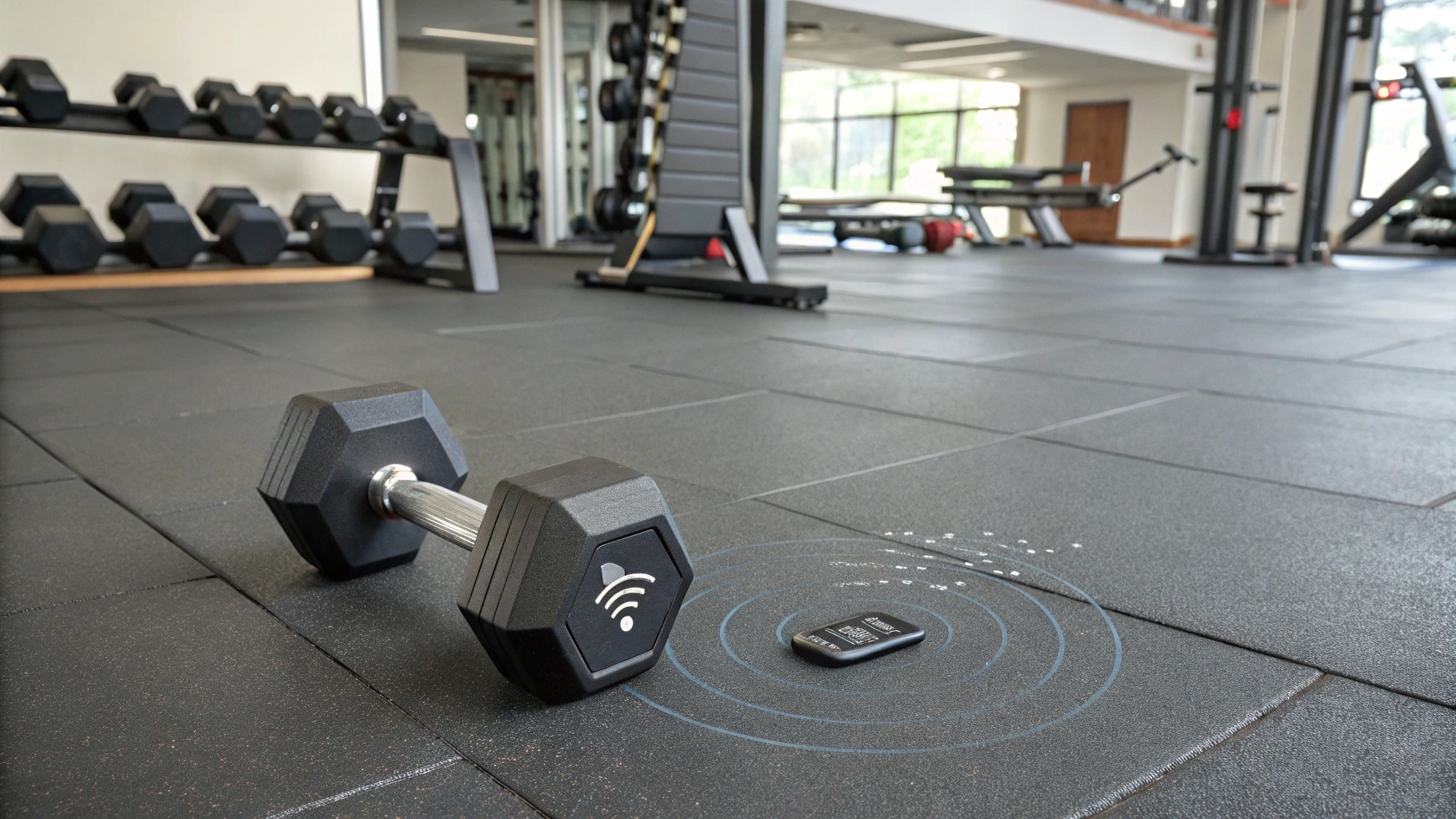Choosing the right flooring is a critical but often overlooked step when building a gym. It impacts safety, performance, and even property value. So, what materials truly stand out and why?
The best gym flooring balances durability, safety, and function. High-density vulcanized rubber excels in all areas, providing excellent impact absorption and noise reduction. It’s the top choice for both home and commercial gyms, proving its long-term value.
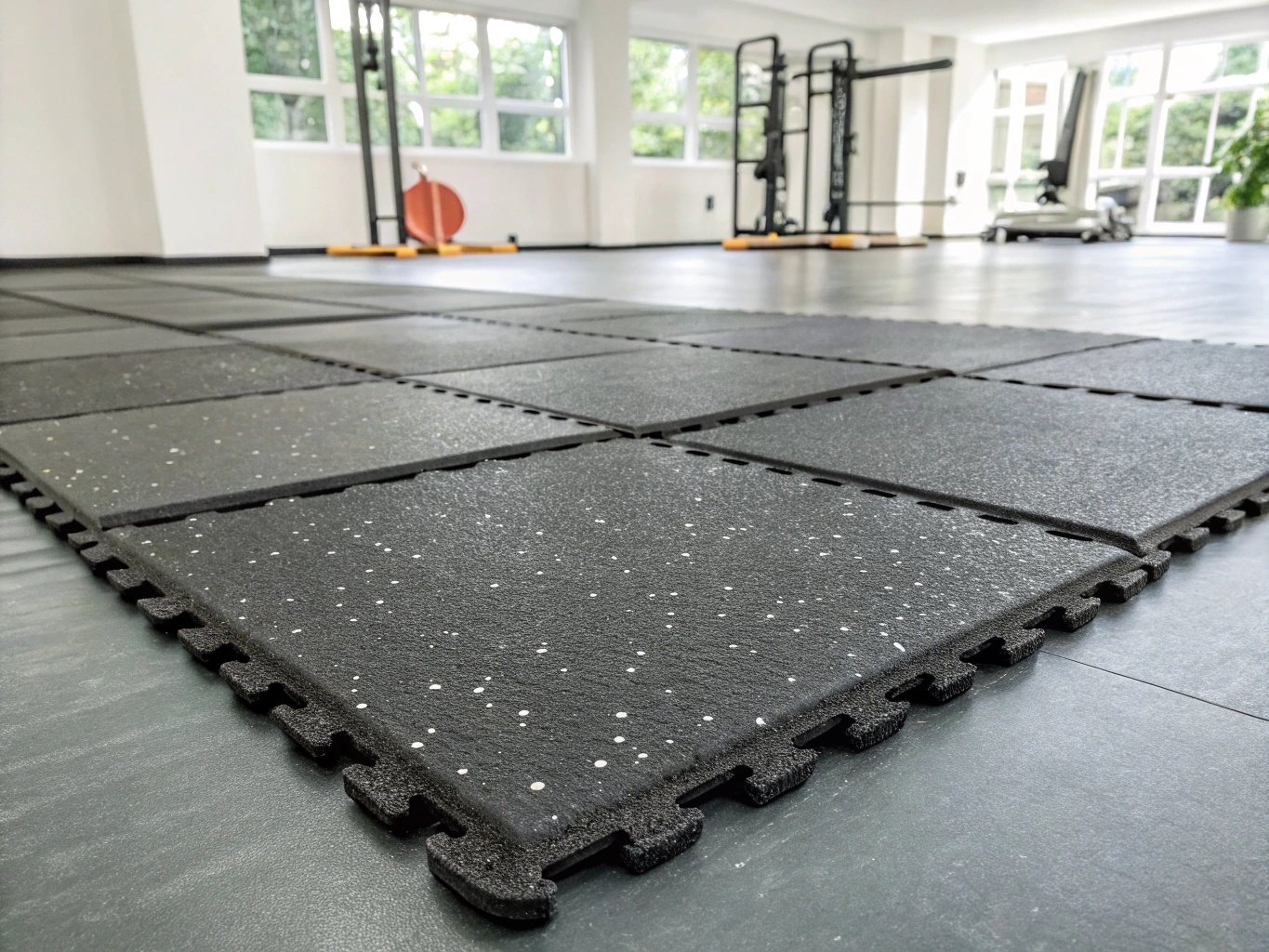 Best Gym Flooring Materials
Best Gym Flooring Materials
The right flooring can transform your workout experience. Let’s explore these options in more detail to help you make the best choice for your specific needs.
What is the rubber flooring used in gyms?
The image of heavy weights and intense workouts often comes to mind with gyms. But what is the rubber flooring that makes it all possible?
The rubber flooring used in gyms is typically high-density vulcanized rubber1. This material is chosen for its ability to absorb impacts2, reduce noise, and offer a safe, non-slip surface3 for various exercises.
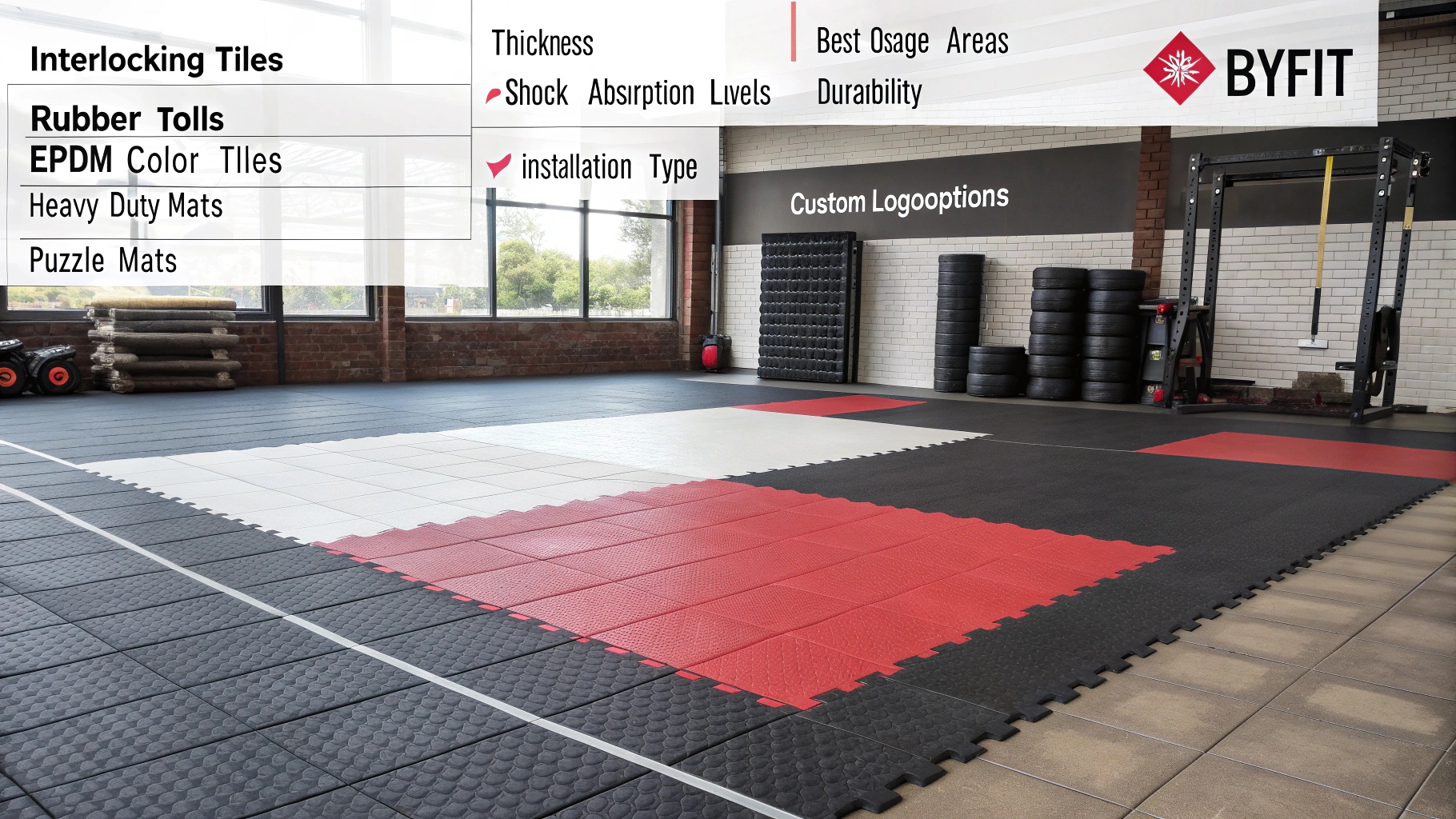 Types of Gym Rubber Flooring
Types of Gym Rubber Flooring
What kind of rubber is used for gym floors?
There are different types of rubber used in gym flooring. It’s essential to know them.
Gym floors commonly use high-density vulcanized rubber. It is favored because it can stand up against heavy use and offers the durability needed in a gym environment.
| Rubber Type | Durability | Impact Absorption | Use Case |
|---|---|---|---|
| Virgin Rubber | High | Excellent | Commercial Gyms |
| Recycled Rubber | Moderate | Good | General Fitness |
| Nitrile-Impregnated | High | Superior | Home Gyms, Eco-Safety |
While virgin rubber4 stands out in commercial settings, nitrile-impregnated rubber5 is perfect for home gyms. The 12mm version absorbs 92% of heavy barbell impacts and prevents microplastic shedding, making it both high-performing and environmentally friendly. BYFIT offers these options, ensuring your flooring meets your exact needs.
Is gym flooring rubber or foam?
Gym flooring can be confusing with options like rubber and foam. What’s the real difference?
Gym flooring is typically made of rubber, though foam options exist. Rubber offers greater durability and impact absorption, making it suitable for heavy weights and high-impact activities, while foam is better for lighter workouts.
| Feature | Rubber Flooring | Foam Flooring |
|---|---|---|
| Durability | High | Low to Moderate |
| Impact | Excellent | Good |
| Use Case | Commercial/Home Gyms | Light Exercise, Yoga |
Rubber flooring is designed to withstand heavy use. For example, 15mm dual-density flooring with a stiff base reduces impact noise by 18dB, outperforming 24mm single-layer rubber. That’s why you find it in MMA gyms meeting strict noise regulations.
What is gym mat material?
Gym mats must withstand tough conditions. But what materials are actually used?
Gym mats are typically made from high-density vulcanized rubber. This material ensures durability, safety, and optimal performance, making it suitable for various intense workout activities.
High-density vulcanized rubber isn’t just durable. Its molecular density determines its energy-absorbing ability. Lab tests show that 2.0cm thick high-density vulcanized rubber can absorb over 60% of impact and reduce noise to under 30 decibels. That’s a big leap beyond traditional foam or PVC.
What is the best thickness for gym flooring?
Thickness is key for gym flooring6 performance. So, what thickness should you choose?
The best thickness for gym flooring varies by activity. For general fitness, 8mm is often enough. For high-impact workouts7 like CrossFit, 15mm or more is better for safety and noise reduction8.
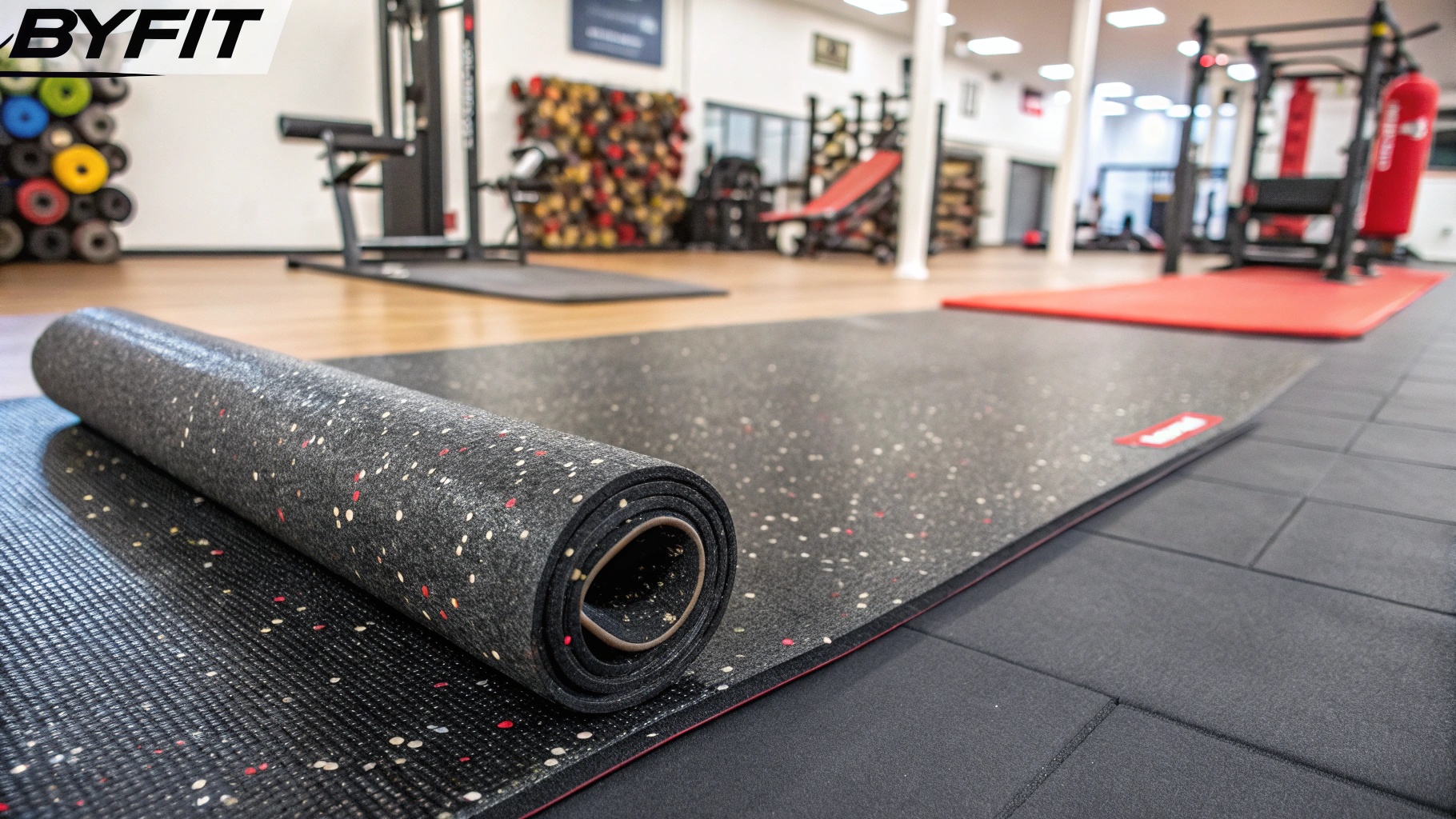 Gym Flooring Thickness Guide
Gym Flooring Thickness Guide
Is 8mm gym flooring9 thick enough?
8mm might seem thin, but is it enough for your gym?
8mm gym flooring is suitable for light to moderate workouts. It offers basic protection and comfort but may not suffice for heavy weightlifting or high-impact activities.
It’s a good option for home gyms with moderate use. But remember, it provides only essential protection.
Is 15mm rubber flooring10 enough?
For more demanding workouts, is 15mm the right choice?
15mm rubber flooring is ideal for high-impact activities. It provides superior shock absorption and noise reduction, making it perfect for CrossFit, weightlifting, and other intense workouts.
15mm dual-density flooring with a stiff base can reduce impact noise by 18dB. This outshines even 24mm single-layer options. Many MMA gyms pick this to meet strict noise regulations.
What thickness mat for the gym?
Choosing the mat thickness can be confusing. What size should you really go for?
For a gym, mat thickness depends on the activity. General fitness might need 8mm, while high-impact exercises like CrossFit require at least 15mm or even 3cm for optimal safety and performance.
| Activity Type | Recommended Thickness |
|---|---|
| General Fitness | 8mm |
| Weightlifting | 15mm |
| CrossFit/High-Impact | 15mm – 3cm |
For CrossFit, 3cm interlocking textured rubber mats are perfect. They ensure rigid support during heavy lifting (anti-deformation rate >95%) and provide a 3ms buffer response for jumps. This balances power needs with joint protection.
Is rubber flooring good for a home gym?
Home gyms are increasingly popular. But is rubber flooring the right choice for them?
Rubber flooring is an excellent option for home gyms. It offers durability11, safety, and noise reduction, protecting your floors and providing a stable workout surface.
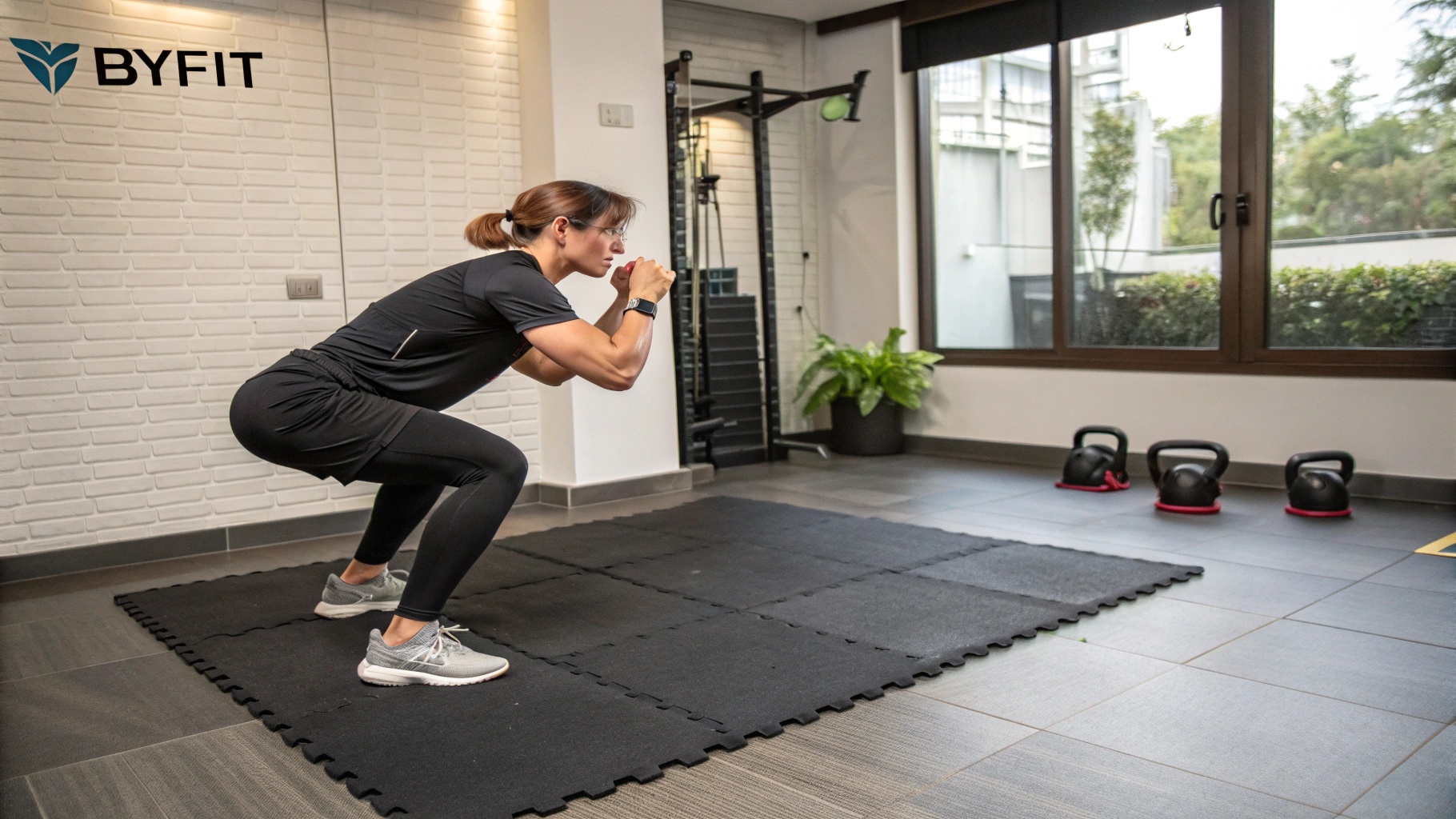 Home Gym Rubber Flooring Benefits
Home Gym Rubber Flooring Benefits
How do I protect my floor in my home gym?
Protecting your home floor is crucial. What steps can you take?
To protect your floor in a home gym, use 15mm rubber floor mats. These mats not only prevent scratches from equipment but also spread out floor pressure, enhancing safety and preserving your property.
15mm rubber mats can cut maintenance costs by over 50% by guarding against scratches. Their honeycomb structure12 also boosts the load-bearing safety of second-floor gyms by 40%, increasing your home’s functional value.
Can you put a home gym on the second floor?
Many homeowners wonder about safety. Is a second-floor gym feasible?
Yes, you can put a home gym on the second floor. Using rubber flooring, especially with a honeycomb structure, helps distribute weight and reduce impact, making it safe and practical.
Using 15mm rubber mats increases the load-bearing safety13 by 40%. This makes it viable to have heavy equipment upstairs without risking structural damage.
What are the different types of gym flooring?
Various gym flooring types exist, each with unique benefits. What are your options?
The main types of gym flooring include rubber tiles, rubber rolls, foam tiles, and vinyl flooring. Each is suited to different needs and activities.
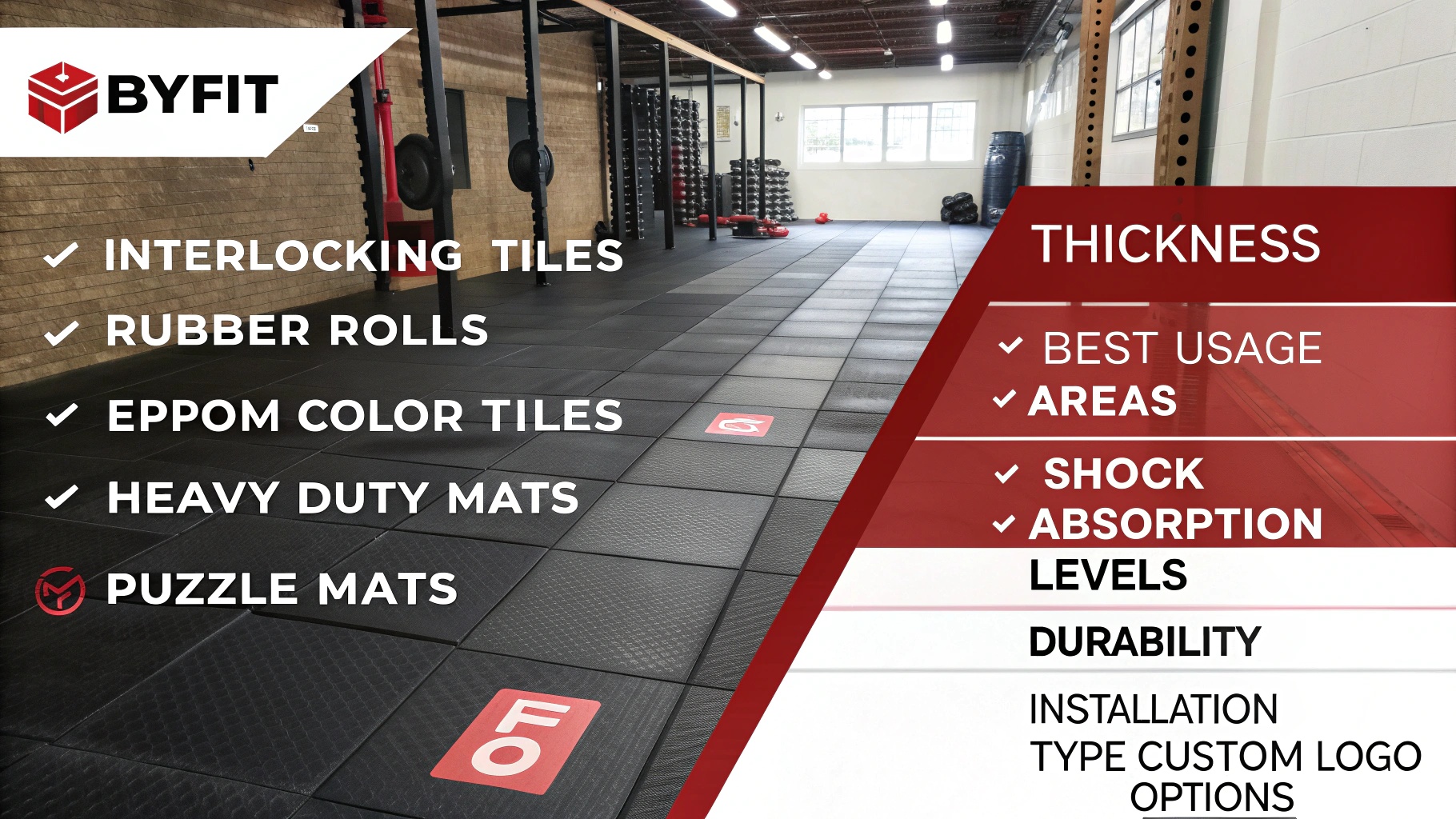 Comparison of Gym Flooring Types
Comparison of Gym Flooring Types
What is the best flooring for a CrossFit gym?
CrossFit demands specific flooring. What works best?
For CrossFit gyms, 3cm interlocking textured rubber mats14 are ideal. They offer rigid support for heavy lifting and a buffer for high-impact movements, balancing power needs with joint protection.
CrossFit gyms often reject standard SBR rubber15 due to its zinc oxide additive, which creates toxic dust during rope climbs. Elite studios now use phthalate-free TPE hybrids16, costing around $12/sqft. This higher price is justified by eliminating respiratory risks.
What is the floor in Planet Fitness?
Planet Fitness is a popular gym chain. What flooring do they use?
Planet Fitness typically uses a combination of rubber and carpet flooring17. Rubber is used in weightlifting areas for durability and impact absorption, while carpet provides comfort in other zones.
This combination helps cater to different workout needs within the same facility. It’s a practical approach for a large, diverse gym.
What is the soft flooring in gyms18?
Soft flooring is common in many gyms. What is it made of?
Soft flooring in gyms is often made of foam or low-density rubber. It provides cushioning for low-impact activities, yoga, and stretching areas, ensuring comfort and safety.
While high-density vulcanized rubber is the go-to for heavy-duty areas, soft flooring offers a gentle alternative for less intense activities.
Conclusion
Selecting the best gym flooring involves balancing many factors, from durability and safety to noise reduction. High-density vulcanized rubber stands out as the top choice, providing excellent performance and long-term value. BYFIT offers a range of options to meet both commercial and home gym needs. With the right flooring, you can create a safe, efficient, and enjoyable workout space.
-
Discover the benefits and applications of high-density vulcanized rubber in gym flooring for safety and performance. ↩
-
Learn how impact-absorbing flooring enhances safety and comfort during workouts in gym environments. ↩
-
Explore the significance of non-slip surfaces in preventing injuries and ensuring safe workouts in gyms. ↩
-
Discover why virgin rubber is the top choice for commercial gyms, focusing on its durability and performance under heavy use. ↩
-
Learn about the unique benefits of nitrile-impregnated rubber for home gyms, including eco-friendliness and superior impact absorption. ↩
-
Explore this link to discover various gym flooring options and their benefits for different activities. ↩
-
Learn about flooring solutions specifically designed for high-impact workouts to enhance safety and performance. ↩
-
Find out how different flooring materials can help reduce noise in gym environments, improving the overall experience. ↩
-
Explore this link to understand the limitations and benefits of 8mm gym flooring for various workout intensities. ↩
-
Discover why 15mm rubber flooring is favored for high-impact workouts and how it enhances performance and safety. ↩
-
Understanding durability can help you choose the best flooring for your home gym, ensuring it lasts through intense workouts. ↩
-
Learn how honeycomb structure enhances safety and load distribution in gym flooring, making your workout space safer. ↩
-
Understand the key factors that influence load-bearing safety in home gyms to ensure your setup is secure and effective. ↩
-
Explore how these mats provide the perfect balance of support and protection for CrossFit workouts, enhancing performance and safety. ↩
-
Understand the reasons why SBR rubber is often rejected in CrossFit settings, particularly regarding health risks during workouts. ↩
-
Learn about the advantages of using phthalate-free TPE hybrids, including safety and performance benefits for athletes. ↩
-
Explore the advantages of using rubber and carpet flooring in gyms to understand how they enhance workout experiences and safety. ↩
-
Discover the materials and benefits of soft flooring in gyms, which can improve comfort and safety during workouts. ↩

